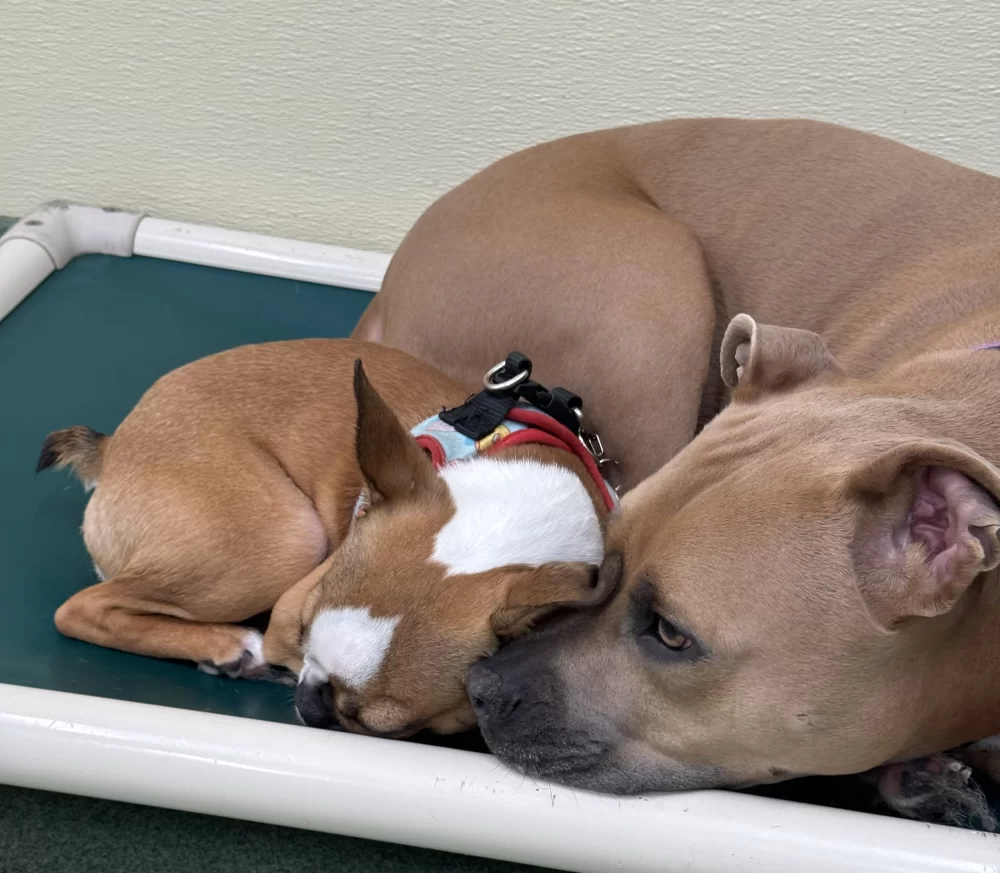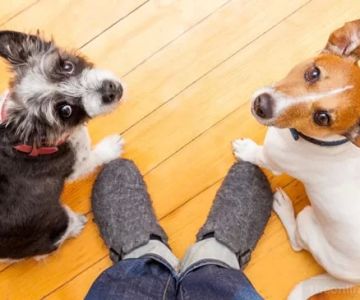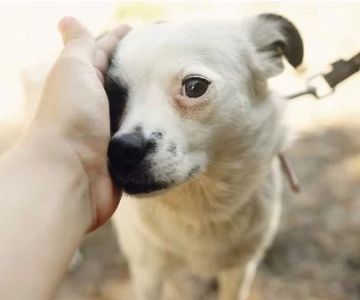Understanding Dog Anxiety: The First Step to Helping Your Dog
If you’ve ever noticed your dog shaking, hiding, or excessively barking in certain situations, you might be dealing with dog anxiety. It’s a condition that affects many dogs, and as a pet owner, it can be heartbreaking to see your dog in distress. I experienced this firsthand with my dog, Daisy, a rescue Beagle mix who showed signs of anxiety every time we left the house. Her anxiety manifested as excessive barking, drooling, and even destructive behavior, which left me feeling helpless.
However, after working closely with trainers and doing some research, I discovered that there are numerous ways to alleviate dog anxiety using training techniques and behavioral strategies. In this article, I’ll share some of the most effective methods that helped Daisy, along with other tips and techniques that you can implement to help your dog feel calmer and more secure.
1. Identifying the Triggers of Your Dog's Anxiety
The first step in helping your dog with anxiety is identifying what triggers their fearful or anxious behavior. In Daisy’s case, it was being left alone. She would begin pacing, whining, and even chewing on furniture as soon as she sensed we were preparing to leave. Understanding the specific triggers for your dog can help you create a more targeted training plan.
Some common triggers of dog anxiety include:
- Separation anxiety (fear of being left alone)
- Noise phobias (fear of thunderstorms, fireworks, etc.)
- Changes in routine or environment (moving, new people or pets)
- Fear of certain objects or situations (vacuum cleaners, car rides, vet visits)
Once you identify what causes your dog’s anxiety, you can begin implementing strategies to help them feel more comfortable and confident in those situations.
2. Training for Separation Anxiety: Gradual Desensitization
If your dog suffers from separation anxiety, as Daisy did, one of the most effective techniques is gradual desensitization. This training method involves slowly getting your dog used to being alone in a controlled, non-stressful way. The goal is to decrease their fear of being left alone and teach them that you will always return.
Here’s how I started with Daisy:
- I began by leaving the house for very short periods, only a few minutes, to avoid overwhelming her.
- Each time I left, I would give Daisy a special treat or toy that she could only have when I was away. This helped her associate my departures with something positive.
- Gradually, I increased the amount of time I spent away from her, always making sure to return before her anxiety escalated.
Over time, Daisy became less anxious when I left. The key is to be patient and consistent with this process. Never punish your dog for showing anxiety, as this can make the problem worse. Instead, focus on rewarding calm behavior and gradually increasing the challenge level.
3. Counter-Conditioning to Change Negative Associations
Counter-conditioning is another effective method for helping a dog with anxiety. This technique involves changing your dog’s emotional response to a specific trigger. For example, if your dog is afraid of loud noises like thunderstorms, you can use counter-conditioning to help them associate these sounds with something pleasant, like treats or playtime.
In Daisy’s case, she had a fear of loud vacuum cleaners. I started by allowing her to hear the vacuum at a low volume from a distance while giving her treats. Over time, I gradually increased the volume of the vacuum while continuing to offer treats and positive reinforcement. The goal was to change Daisy’s perception of the vacuum cleaner from something scary to something that meant rewards and positive experiences.
Consistency is key with counter-conditioning. The more you practice, the more likely your dog will begin to associate the trigger with something positive, which can help reduce their anxiety over time.
4. Providing a Safe Space for Your Dog
Every anxious dog needs a safe space where they can retreat to when they feel overwhelmed. This could be a crate, a cozy bed, or a designated area in your home where your dog feels secure. For Daisy, we created a special corner in the living room with her bed, blankets, and a few of her favorite toys. This became her “safe haven” where she could go when she felt anxious or needed a quiet space.
Having a safe space is especially helpful when your dog is experiencing separation anxiety or other stressful situations. Encourage your dog to spend time in this space by placing treats or toys inside, and allow them to enter the space at their own pace. Don’t force them into the area, as this can increase their anxiety.
Over time, Daisy began to associate her safe space with comfort and relaxation, which helped her feel less anxious during stressful times.
5. Calming Products and Tools for Anxious Dogs
In addition to training techniques, there are several calming products available that can help reduce your dog’s anxiety. Some products that worked well for Daisy include:
- Pheromone Diffusers: These products release synthetic pheromones that mimic the calming scent mother dogs release to their puppies. These can be particularly helpful for dogs with separation anxiety.
- Thundershirts: Thundershirts are designed to apply gentle, constant pressure to your dog’s body, which has a calming effect on many dogs with anxiety.
- Calming Supplements: There are various supplements on the market that contain ingredients like melatonin, valerian root, or L-theanine, which can help reduce anxiety in dogs.
While these products can be helpful, they should be used in conjunction with training and behavior modification. In Daisy’s case, the combination of desensitization, counter-conditioning, and a calming pheromone diffuser made a significant difference in her anxiety levels.
6. Professional Help for Severe Anxiety
If your dog’s anxiety is severe or doesn’t improve with home-based techniques, it may be time to seek professional help. A certified dog behaviorist or veterinary behaviorist can assess your dog’s specific needs and provide additional strategies, such as behavioral modification or even medication if necessary.
For dogs with extreme anxiety, medications like selective serotonin reuptake inhibitors (SSRIs) may be prescribed to help regulate their emotional responses. While medication isn’t always the first choice, it can be helpful in conjunction with training to give your dog the best chance at recovery.
In Daisy’s case, we never needed medication, but her behavior consultant helped us refine our training approach and provided additional support during difficult times.
Conclusion: Patience and Consistency Are Key
Training a dog to manage anxiety takes time, patience, and consistency. Every dog is different, and some may take longer than others to adjust. By identifying triggers, using techniques like desensitization and counter-conditioning, and providing a safe and calming environment, you can help your dog feel more secure and less anxious. If necessary, don’t hesitate to seek professional help to ensure the best outcome for your pet.












